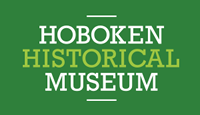From Another Time: Hoboken in the 1970s
January – July 2007

A Trip Back to the Seventies: Imagine a Hoboken before the high-rise residential towers and ubiquitous nail salons, cell phone stores, realtors and shoe boutiques. This exhibit celebrates the Museum’s latest book, From Another Time: Hoboken in the 1970s, where visitors will be transported back to Hoboken in the 1970s through a series of powerful black and white photographs taken by three highly regarded photographers. Bringing the exhibit to life will be a series of lectures by individuals who were instrumental in shaping Hoboken’s development during this pivotal decade.

The book and exhibit depict a Hoboken in limbo between its industrial heyday and its reemergence as a hotbed of residential development, documenting the people, street scenes, block parties, parades, and festivals that are an integral part of Hoboken’s essential character. Although many storefronts were vacant, many apartment buildings were dilapidated, and the padlocked waterfront was patrolled by packs of feral dogs, the people who lived here were determined to make a better life for themselves.
Before the urban-professional migration of the 1980s, Hoboken was populated by a colorful mix of born and raised Hobokenites, who proudly carried on centuries-old traditions such as saints’ festivals with feast bombs and long lines for fresh zeppole; more recent arrivals, including Puerto Ricans, who arrived just as factory jobs were leaving; and a new wave of bohemian “immigrants,” artists and musicians lured by affordable rents and spacious lofts in abandoned factories.
The book unites three distinct views of the city: Caroline Carlson’s photographs of the children of the city and their families; John Conn’s stark views of storefronts and buildings, some of which are long gone; and Benedict Fernandez’ street scenes and images of the working waterfront. The photos are accompanied by two poignant essays: one by a born-and-raised Hobokenite, Anthony DePalma, now a New York Times reporter, who witnessed the changes to his hometown, and the other by Sada Fretz, who moved her family here in the 1970s and saw the city with fresh eyes.
The 190-page book was designed by local artist and graphic designer McKevin Shaughnessy, and was partially funded by contributions from members and friends of the Museum. The exhibit, lecture series, and book were made possible through a special project grant from the New Jersey Historical Commission, a division of the Department of State.
